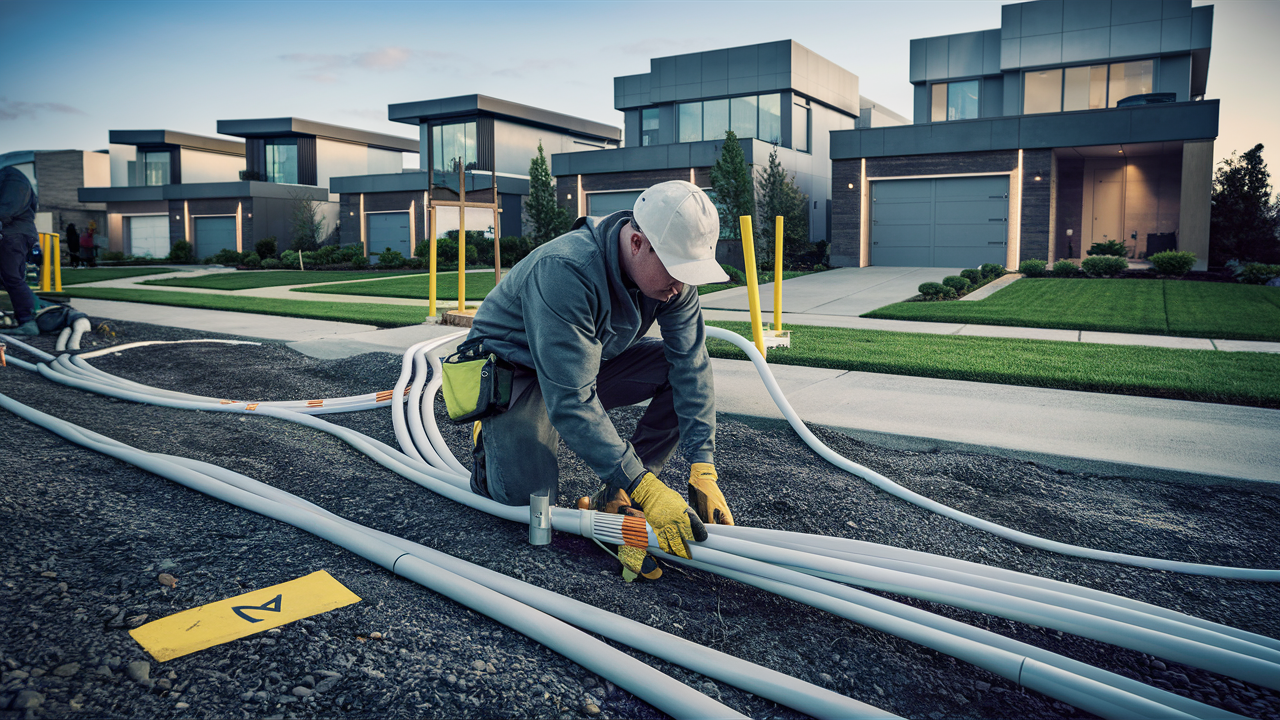How is fiber internet installed in a neighborhood?

Fiber internet service is a type of connection that someone can have in their area, and it is an intricate process that takes a lot of time, money, and effort to complete. Here is a step-by-step overview of how it works.
Feasibility Studies and Planning
The first process involves the ISP evaluating the possibility of a certain neighborhood for the internet service provider. They evaluate aspects such as the number of people in the area served, availability of underground ducts or telephone poles, construction expense, and likely profit. If a neighborhood appears attractive, they draw up elaborate plans illustrating the exact place where the fiber cables are to be laid, where connections will be made, and where alterations to the infrastructure will be required.
Permitting and Construction Preparation
When a particular location is chosen, the ISP then embarks on the process of obtaining permits and arranging for construction. They go out for all the appropriate licenses from the local municipal government to place fiber on all public structures. It also liaises with other utilities regarding the underground works that are likely to be crossed by fiber cables. It is also important to note that some of the existing utility poles or ductwork may require additional capacity to accommodate the new fiber cables.
Establishing Fiber Huts/Cabinets
Next, the locations for major hubs where fiber cables will converge must have to be identified, and this will be by each neighborhood. These fiber huts or street cabinets serve as locations for fiber optic splitters and switches, servers, and backup power systems. Fiber cables connect the above hubs to other points in the neighborhood. Decisions on where to establish these locations are made following factors such as access, distance from other telephone/cable lines, power sources, etc.
It may be installed either through an underground or an aerial fiber cable.
These cables can now be physically deployed throughout the neighborhood since the physical preparations have been made. This can be done either by placing the fiber cables below the ground, in the existing ducts, or placing the fiber cables on top of the existing utility poles. New micro ducts can be used as access facilities to lay the main backbone cables passing through to the individual houses. Individuals establish operational areas in or across neighborhoods and employ equipment such as underground boring tools and aerial buckets for the installation of wires.
Connecting to Individual Houses
After strands of main fiber cable have been laid, the home connection can be made. Last, installation teams extract the lateral cables from the street fibers and directly into the house that applied for the service. At the home location, the cable is terminated at an ONU/ONT where the light signals are translated to networking traffic. At this stage, the residents have a fiber-optic connection right to their house.
Network Testing and Activation
Following the construction of the actual Fiber network, there is testing that goes on. LED light signals are sent to all the strands that are live to confirm the link and data throughput on every strand. Neighborhood huts/cabinets have to offer testing of data connections to ascertain if they are capable of handling traffic. They are analyzed and corrected if they are present in the equipment or in the processes that take place in the building. Once the availability of the whole system is confirmed across the points of realization, the network can become live and provide internet access to the residents!
Ongoing Maintenance
Despite activation, the structure also requires maintenance and care to sustain its effectiveness in the long run. ISPs also listen to signals to identify signs of degradation or the presence of faults. Fiber optic cables are installed underground, but they are also clearly labeled, and a plan is made showing where the cables are so that in the future, if the cables get damaged, they can easily be located for repair. Records can also be altered each time new nodes or customers are added to the existing diagram. In the long run, there may be a necessity to expand the capacities where new technologies should be installed, together with the existing ones. Maintenance is done frequently to allow many years after installing the first fiber in the neighborhood.
Fiber connectivity is a long game that calls for strategic planning and large amounts of resources from AT&T Internet providers. However, the benefits for residents are not less in terms of performance, which is why in many cases, such investments pay off. It is quite mind-boggling to think of fiber internet as a broadcasting cable that transforms a community in terms of speed, choice, and possibilities of new technologies once it is installed.
Upgrade to faster, more reliable AT&T Fiber Internet today! Call us at +1 844-905-5002 and get connected with speeds that keep you ahead.





